You can use css-gradient. This should work with all browsers.
background-image: linear-gradient(left top, rgb(232,232,232) 16%, rgb(122,122,122) 58%, rgb(115,115,115) 79%);
background-image: -o-linear-gradient(left top, rgb(232,232,232) 16%, rgb(122,122,122) 58%, rgb(115,115,115) 79%);
background-image: -moz-linear-gradient(left top, rgb(232,232,232) 16%, rgb(122,122,122) 58%, rgb(115,115,115) 79%);
background-image: -webkit-linear-gradient(left top, rgb(232,232,232) 16%, rgb(122,122,122) 58%, rgb(115,115,115) 79%);
background-image: -ms-linear-gradient(left top, rgb(232,232,232) 16%, rgb(122,122,122) 58%, rgb(115,115,115) 79%);
background-image: -webkit-gradient(
linear,
left top,
right bottom,
color-stop(0.16, rgb(232,232,232)),
color-stop(0.58, rgb(122,122,122)),
color-stop(0.79, rgb(115,115,115))
);
Older versions of IE don't support gradient, so you have to make second div container, which will be transparent on other browsers.
And define new css for older versions of IE, e.g.:
<!--[if lte IE 8]>
<style>
.diaggradientback
{
position:absolute;
left:0;
top:0;
width:100%;
height:100%;
overflow:hidden;
filter: progid:DXImageTransform.Microsoft.gradient(GradientType='1', startColorstr='#ffa885', endColorstr='#330000');
}
.diaggradientfront
{
position:absolute;
left:0;
top:0;
width:100%;
height:100%;
overflow:hidden;
filter: progid:DXImageTransform.Microsoft.gradient(GradientType='0', startColorstr='#bbffa885', endColorstr='#bb330000');
}
</style>
<![endif]-->

